
Home » Celts
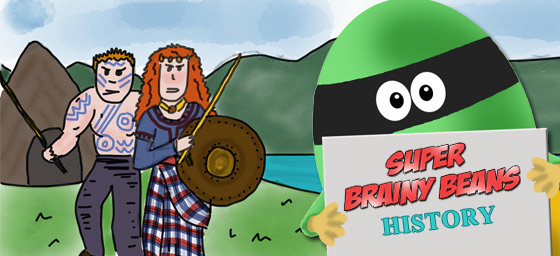

The Celts KS2
The Celts KS2 for kids learning at Primary School. Homework help on the history of Celts, the Iron Age facts, Celtic life and Boudicca.
Time: 800BC - 50AD
Who were the Celts?
The Celts were made up of many different tribes, but their way of life was very similar. Living through the Iron Age period, they grew from mid-Europe and slowly spread out over much of the rest of Europe.
The Iron Age
What was celtic life like.
Wherever they settled, Celts would set up farms and small villages. Their houses were called roundhouses made of wood or stone and contained just one big room.
Being very skilled the Celts made all their own iron weapons and tools. Using bronze, silver and gold they loved to create beautiful objects.
The Celts believed that their Gods lived in streams, rocks and trees and they would throw precious objects into a river as a gift to the Gods.
Celtic life
Horrible histories - cut-throat celts.
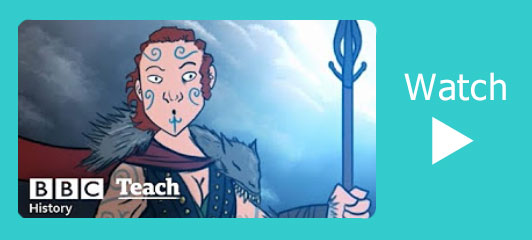
Celtic Warriors
Being fierce fighters Celtic Warriors and their tribes often fought each other. They would tattoo themselves with blue paint to make themselves look scary.
They had great feasts whenever they won a battle and during these feasts, poet-musicians called bards would tell poems of Celtic heroes.
Who was Boudica?
Boudica's husband was a King Prasutagus, which therefore made her a Queen. When this Celtic king died, the Romans came and demanded taxes from people living on the land. Queen Boudica was a strong woman and refused, but this led to her being tied to a post and beaten in front of her people.
Angry for revenge, Boudica led an army, the Iceni tribe, to a Roman town called Colchester where she defeated the Romans. With her large strong army, she then attacked London and St.Albans and she won again. All that remained was to defeat the governor and his army and then they would be free of Roman rule.
As strong as Boudica's army was, the Romans were stronger and pushed them back. The battle was lost. Rather than be captured by the Roman army, Boudica killed herself by drinking poison.

What happened to the Celts?
The Roman Empire grew stronger and stronger and in the end, the Romans conquered most of the land owned by the Celts. Some of the Celtic cultures live on today in Ireland and in remote parts of Scotland and Wales.
Also on Super Brainy Beans
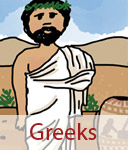
Display Settings
Welcome to the display settings! Click the "Get Started" button below or use the buttons above to choose which setting(s) you want to change.
Get Started
Select your preferred typeface/font from the list below.
Next Setting
Colour Theme
Select your preferred colour theme.
Select the text size that you find the easiest to read.
Letter Spacing
Line height.
The Great Fire of London was a fire that was so big that it burned nearly all of the buildings in London, with the exception of the Tower of London as that was made from stone, and stone doesn't burn up easily.
All settings are saved automatically and can be changed at any time. What do you think of this feature?
23rd November 2021
The Celts, also known as the Iron Age Celts, were people that lived in the present-day Britain and Northern Ireland. Some say that the Celts were the original Brits.
The Celts famously had round houses, with the roof being made of straw in the shape of a cone. The walls of the houses were usually made of mud.

As you can see in the house above, there is a hole at the top of the roof. This is because Celtic houses usually had a fire going in the middle of the house so they could cook animals and keep warm. Surrounding the fire were beds where Celts would sleep.
A lot of the food that they ate was grown or killed close to where they lived. This included vegetables like carrots, onions and turnips and meat like fish, pigs and chickens. Other things they ate include:
- grains (such as wheat)
When did the Celts exist?
They still exist today, with Celtic languages being spoken in Cornwall, Wales, parts of Scotland and Ireland. The Celts started becoming more Roman in the centuries after the Romans had invaded.
Roman invasion
The successful Roman invasion in 47AD changed the way the Celts lived. A lot of Celts moved to Scotland, where the Romans built Hadrian’s Wall. This was because the Romans couldn’t take over Scotland since they would lose too many soldiers.
- Create new account
- Reset your password
Register and get FREE resources and activities
Ready to unlock all our resources?
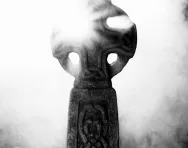
Who were the Celts?
The name ‘Celts’ (pronounced ‘kelts’) is used to describe all of the people who lived in Britain and northwest Europe during the Iron Age – from 600 BC to 43 AD, which is when the Romans arrived.
The Celts were a very advanced society. For instance, they learned how to make weapons from iron, which is why we call the time they lived in the “ Iron Age ”. In Britain, the Celts settled in areas such as Cornwall and Wales .
Top 10 facts
- The Celts lived during the Iron Age , from about 600 BC to 43 AD . This is the time when iron was discovered and used.
- The Iron Age ended when the Romans invaded Britain and set up their own civilisation and government.
- The people who lived in Britain during the Iron Age weren’t called ‘Celts’ until the 1700s. The name is used to describe all the different tribes that lived in Britain then.
- There were three main branches of Celts in Europe – Brythonic , Gaulic and Gaelic . Brythonic Celts (Britons) settled in England.
- The Celts who settled in England were split into many different tribes, each ruled by a king or queen.
- The Celts believed in many different gods who affected every part of everyday life. Druids , who were priests in Celtic society, tried to figure out what the gods wanted.
- Men and women in Celtic times usually wore long tunics with different accessories, such as coats, capes or belts.
- Most Celts were farmers , and they lived in houses that were round instead of square.
- In battle , Celts mainly fought with swords and spears, and they used long shields to protect themselves.
- Some people can still speak Celtic languages such as Welsh and Gaelic .
The Celts timeline

- 335 BC Celtic tribes signed a peace treaty with Alexander the Great, ensuring peace between the Celts and the Greeks
- 70 BC Druids arrived in Britain

Boost Your Child's Learning Today!
- Get a tailored learning plan for your child
- English & maths resources added each week
- Interactive & printable activities
Did you know?
- The Iron Age is named for the fact that people first started using iron to make weapons and tools. Before this, they’d have used bronze .
- Brythonic (also called Britons), who lived around modern-day Cornwall and Wales
- Gaelic (also called Gaels), who were based in Ireland , Scotland and the Isle of Man
- Gaulic (also called Gauls), who lived across modern-day France , Belgium, Switzerland and northern Italy
- The Celts wore brightly coloured clothing, and made fabric dyes from berries, plants and even seaweed. Dyeing was something that only women could do – it was considered bad luck to dye cloth if a man was around!
- The Celts lived in round houses with thatched roofs – they were made in the shape of circles, rather than with four walls.
- Many Celts were farmers, so they grew their own food and learned where they could gather nuts, berries and honey around their village.
- The Celts also kept their own cows, chickens and other livestock – sometimes the animals would come into their homes at night, as they didn’t have their own stable.
- Groups of houses built on top of hills were called hill forts – people living there could see if any enemies were coming just by looking out over the valleys, and could build strong walls around their hill to help defend it.
- Some people can still speak languages that the Celts spoke, Welsh and Gaelic .
Celts gallery
- A map of Iron Age Europe
- A roundhouse reconstruction at the Ancient Technology Outdoor Education Centre in Cranbourne, Dorset (Photo Credit: Clive Perrin)
- Celtic coins
- A real Iron Age Celtic sword
- A Celtic knot design
- A reconstructed Celtic village in Gabreta, Germany
- The "Castro de Barona" in Spain, the excavated site of an old Celtic fortress settlement
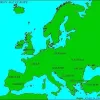
The body of an Iron Age Celt was found in a bog in Cheshire in 1984. He is called the Lindow Man , and could have died as part of a sacrifice to the gods worshipped at that time.
In Celtic society, people could tell how wealthy you were just by looking down at your feet. Shoes would have taken a lot of time and skill to make, so only higher class people would be able to afford them. Celtic women usually wore two types of garments called the léine (a long tunic) and the brat (a cloak). Celtic men also wore léines and brats, but they’d also sometimes wear an inar (a jacket) over truis (trousers or shorts).
While you often hear about people in past times not taking very good care of themselves, the Celts liked to stay clean, smelling nice, and make an effort with their appearance. Archaeologists have found beautiful jewellery such as torc necklaces, razor blades for shaving, combs and hair accessories that tell us about what sorts of things the Celts would have used.
Celtic priests were called Druids , and the Celts believed that they understood nature and the world around them so well that they predict the future from it. Druids also acted as judges in Celtic society, and even doctors; they knew a lot about the healing properties of plants, and which ones would help someone feel better if they were ill or hurt. The Celts believed that there were gods for every part of life, and that the Druids were the ones who understood how to speak to them and interpret what they wanted.
If there was a battle in Celtic times, anyone could be asked to fight – women as well as men. Celts used iron spears and swords, and they also carried long shields made from wood or iron. Some Celtic tribes would use blue paint to draw designs on their skin before going to battle.
A famous Celt is Warrior Queen Boudicca , who led an uprising against the Romans when they invaded Britain. Histories think that she poisoned herself when her soldiers were losing, and the Romans were about to take them prisoner.
Related Videos
Just for fun...
- Gruesome mini-games to play: Horrible Histories: Romans vs Celts
- "Visit" Celtic Britain : see postcards of the sights, be prepared with travellers' essentials and learn some useful phrases
- Take a Celts, Bronze Age, and Iron Age quiz to show off your knowledge
- Download, print and make a paper model of a roundhouse
- Take the Rotten Romans & Cut-throat Celts quiz
- Build your own stone circle
- Learn to draw the elaborate Celtic knots used for decoration by the ancient Celts
- Make your own Celtic armlet (print the template and the instructions to make it in clay or in card )
Books about the Celts for children
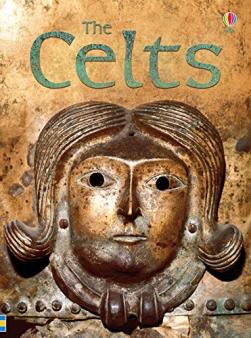

Find out more about the Celts:
- Information about Celtic life in Britain from a British Museum exhibition , with images of beautiful artefacts
- See a map of where the different native tribes of Britain lived in the Iron Age
- Information about Celtic religion and Celtic warriors
- Look through a collection of images of reconstructed Celtic roundhouses
- Watch BBC Bitesize videos about life in Celtic Britain
- Understand more about the Picts in Scotland in BBC Bitesize videos
- There are some wonderful BBC video clips about different aspects of Celtic life: find out about Celtic jewellery , Celtic artefacts , Celtic statues , everyday Celtic objects , Celtic water gods , Celtic religion , Celtic clothing , Celtic funerals , Celtic burial rites and Celtic burial chambers .
- Watch video clips to understand what a Celtic village looked like, how people lived in Celtic villages , Celtic roundhouse design , dwellings in a Celtic town and brochs , Celtic houses in the area which was formerly occupied by Picts and is now Scotland. An excavation at Chysauster, site of a Celtic village in south western Cornwall, shows what the ruins of roundhouses look like today .
- See pictures of beautiful Celtic art
- What did the Celts look like? Find out more about the reconstruction of a Celtic warrior's body found at Lindow Moss in Cheshire , famously known as the Lindow Man. His last meal was also analysed to understand more about his diet!
- Read children's fiction about the Celts
- Iron Age Celts in Ireland
- Find out about Celtic objects and art , including a Celtic sword and scabbard dating from 60 BC
See for yourself
- "Visit" Celtic Britain with a BBC Bitesize interactive guide
- See the Lindow Man at the British Museum
- The Maiden Castle hill fort in Dorchester is the UK’s largest and most complex example of an Iron Age hill fort
- Visit Danebury Iron Age Hill Fort Local Nature Reserve in Hampshire and download a "story walk" to complete around the site
- Castell Henllys is an important Iron Age archaeological site in north Pembrokeshire, Wales
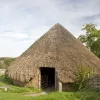
Give your child a headstart
- FREE articles & expert information
- FREE resources & activities
- FREE homework help
- Fundamentals NEW
- Biographies
- Compare Countries
- World Atlas

Historians have learned about the Celts by studying objects that they left behind. The oldest information about the Celts comes from graves of Celtic chiefs, or leaders, found in Austria. The graves date from about 700 bce .
The Celts lived in tribes. Each tribe had a chief, warriors, free farmers, and slaves. Most tribes lived in protected villages, often on a hilltop. There were fields and pastures nearby for farming and raising cattle.
The Celts were skilled in working with metals. They were one of the first peoples in Europe to work with iron . They made swords, shields, helmets, and gold and silver jewelry.
The Celts practiced a religion called Druidism. Their priests were called Druids. The Druids taught that souls lived forever by passing from one person to another at the time of death.
Celtic power in western Europe lasted for only a few hundred years. Then Romans, Carthaginians (a people from North Africa), and German tribes took over. The Celts kept their unique culture only in parts of the British Isles and in the Brittany region of northwestern France. Some people in Ireland, the highlands of Scotland, the Isle of Man, Wales, and Brittany still speak Celtic languages.
It’s here: the NEW Britannica Kids website!
We’ve been busy, working hard to bring you new features and an updated design. We hope you and your family enjoy the NEW Britannica Kids. Take a minute to check out all the enhancements!
- The same safe and trusted content for explorers of all ages.
- Accessible across all of today's devices: phones, tablets, and desktops.
- Improved homework resources designed to support a variety of curriculum subjects and standards.
- A new, third level of content, designed specially to meet the advanced needs of the sophisticated scholar.
- And so much more!
Want to see it in action?
Start a free trial
To share with more than one person, separate addresses with a comma
Choose a language from the menu above to view a computer-translated version of this page. Please note: Text within images is not translated, some features may not work properly after translation, and the translation may not accurately convey the intended meaning. Britannica does not review the converted text.
After translating an article, all tools except font up/font down will be disabled. To re-enable the tools or to convert back to English, click "view original" on the Google Translate toolbar.
- Privacy Notice
- Terms of Use
Over 6,200 homeschool resources and growing!

Free Resources for Learning About the Celts
Published: March 10, 2021
Contributor: Jeannette Tuionetoa
Disclosure: This post may contain affiliate links, meaning if you decide to make a purchase via my links, I may earn a commission at no additional cost to you. See my disclosure for more info.
If you are exploring a country study about Ireland, you may want to look into interesting Celtic history with these free resources for learning about the Celts.

Those who know me, know that I am extremely intrigued by Irish history and folklore. One semester, I was super late in signing up for classes.
I needed to take a literature course, but the pickings were slim. I grew up in New York and was always intrigued by the Irish folks I saw there. So, when I saw this Irish Studies in Literature course I signed right up.
It was a lot more intriguing than expected, and I was pleasantly surprised. Between the Celtic warrior stories and fairy legends, I found myself not getting enough.
With two kids, being a working mom and wife as an unconventional student, I was really grateful to learn about a culture I always wanted to learn about.
Quite frankly, I was glad to be forced to do it. I wouldn’t have known about Celtic culture and stories otherwise — because life was too crazy.
Moving into homeschooling my kids, I get to pick subjects that pique their interest and sometimes mine as well.
My son really enjoyed this unit on the Celts around St. Patrick’s Day . It seemed to be a great time since Celtic culture and language still carry through in Great Britain and Ireland today.
Brief Celtic history and facts.
The Celts were an advanced society that lived during the Iron Age around 600 B.C. to A.D. 43.
Celts moved away from Europe and toward the islands that make up the United Kingdom today like Scotland, Ireland, Wales, and England.
On these islands, the Celts settled on small kingdoms called tuaths where the kings lived on hilltops.
Remember the infamous and feared Roman Army? Well, the Celts defeated them both in 390 B.C. and 225 B.C., although eventually clans didn’t band together and were taken over.
Nevertheless, the Celts earned a reputation amongst the Latin and Greek writers of the time for being vicious warriors. They were also skilled horsemen who rode on battle chariots to combat.
Just look at Celtic artwork, and you would see that Celts were portrayed as very aggressive and scary warriors with long beards, long hair, long shields, and long swords.

So, the umbrella over the Celts ranged from barbarian drunkards to skilled metalworkers. My son found both of these super cool.
Explore these free resources for learning about the Celts in your homeschool.
Celtic Unit Study | Kinder Days
Ancient Celts Unit Study: Resources | ANGELICSCALLIWAGS
Celtic History Books For Children | Resources for History
FREE Celts Facts & Worksheets | KidsKonnect
Celts Facts for kids | Kids.Kiddle
Information on the Celts | Primary Homework Help
Celts History and Timeline | The School Run
FREE Celts Presentations in PowerPoint Format | World History.PPPst.com
History of the Celts | DK Find Out
Iron Age Celts Unit Study | Woodland Classroom
Celtic Tribes | Children’s British History
History of the Celts | Live Science
Celtic Knot Meanings – Old Designs Get Lots of Modern Meanings | Ireland Fun Facts
Resource – Celtic Ireland | HubPages
The Celtic Tribes | English Monarchs
Celtic Britain (The Iron Age – 600 B.C. – A.D. 50) | Britain Express
Ancient Ireland, Wales, Scotland, Isle of Man Celtic Religion | Mr.Donn
Celtic History Unit Co-op. Week 6: Runes | Highhill Education
Learn some facts all about Celts for kids:
10 Interesting Facts About The Celts | Celtic Wedding Rings
Eight Surprising Things You Should Know About the Celts | Ancient Origins
Living Celtic Languages | Maps on the Web
Check out these Celts arts, activities, and crafts to add to your lessons:
How to Make Celtic Cakes -Recipe for Hands-on History | Tina’s Dynamic Homeschool PLUS
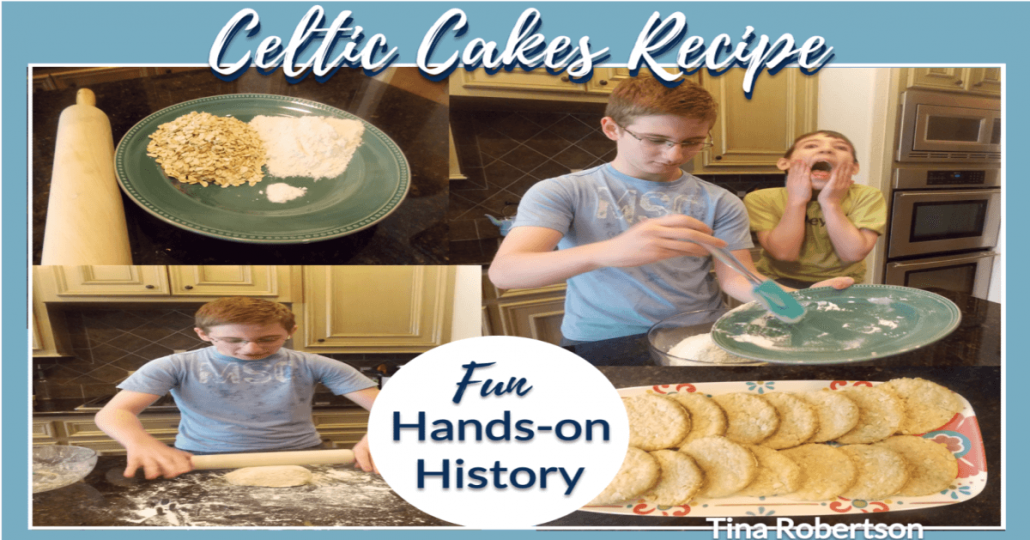
STEAM Activity Celtic Knot Design for St. Patrick’s Day | JDaniel4’s Mom
What Is Celtic Art? | DLTK Kids
Celtic Knot Cookies From Ireland | The Educators Spin on It
Celtic Warrior | SuperColoring Pages
FREE Printable Irish and Celtic Symbols Collection | Marcel’s Kids Crafts
How to Draw a Celtic Knot | Easy Drawing Guides
Color a Celtic Knot FREE Worksheet | Education.com
Foldable Celtic Knot Embellishments | The Paper Craft Post
Celtic Glue Pictures | Choices for Children
Celts Themed Word Search | Primary Treasure Chest
The Celts KS2 Unit | Super Brainy Beans
Your kids will enjoy these videos about Celts:
The Rise and Fall of the Celtic Warriors – Philip Freeman | TED-Ed
10 Facts You Didn’t Know About The Celts | Top Lists
Celtic Art History from Goodbye-Art Academy | Philinthecircle
Video – Celtic History & Mythology:- Ancient Ireland | theosophycardiff
Explore Celtic history and the role of mythological or folklore studies in your homeschool.
Myth-Folklore Unit: More Celtic Fairy Tales | Myth and Folklore
Celtic Mythology and Irish Legends | What Do We Do All Day
I will leave you with a Celtic quote that you may want to share with your kids:
“Flaws are beautiful differences that have been wrongly considered.”
― Erin Forbes, Fire & Ice: The Kindred Woods
Here are some tips that may help you spruce up your history lessons at home:
How to Teach History to the Child Who Hates History
Budget-Friendly Ways to Dig Into History
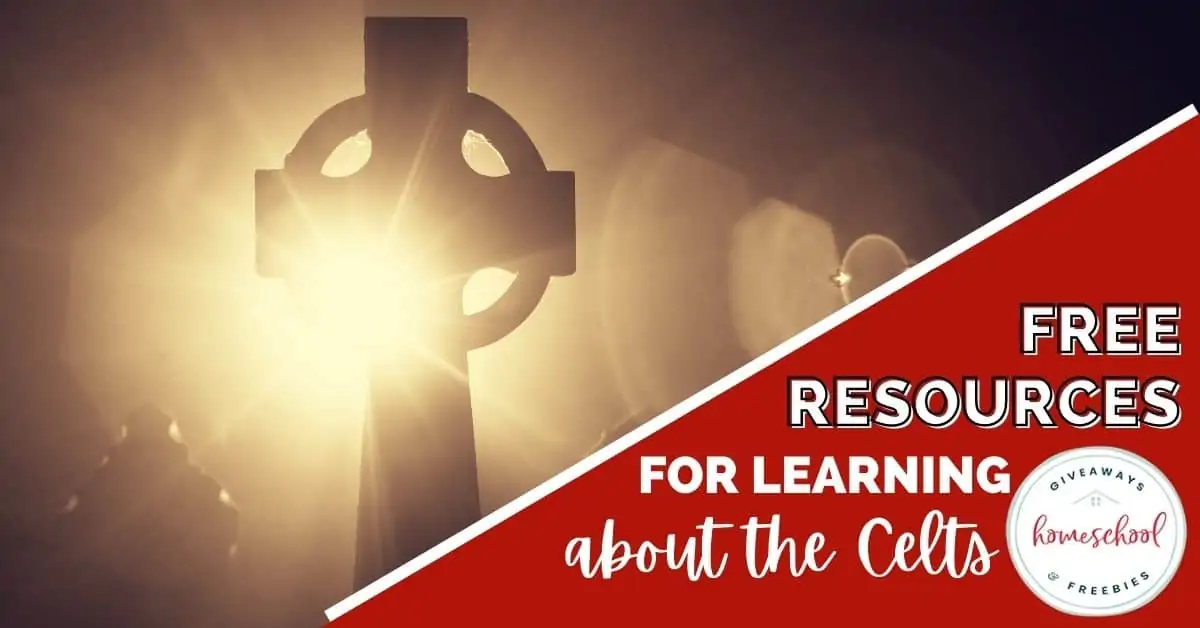
Jeannette Tuionetoa
Jeannette is a wife, mother and homeschooling mom. She has been mightily, saved by grace and is grateful for God’s sovereignty throughout her life’s journey. She has a Bachelor in English Education and her MBA. Jeannette is bi-lingual and currently lives in the Tongan Islands of the South Pacific. She posts daily freebies for homeschoolers!
Related resources

10+ Fascinating Military Forts in Texas to Visit
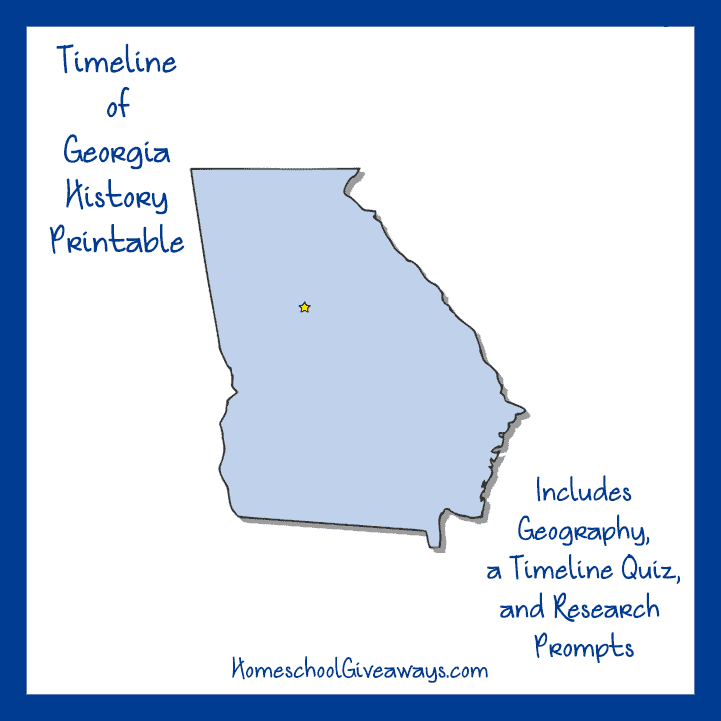
FREE Georgia State History Printable
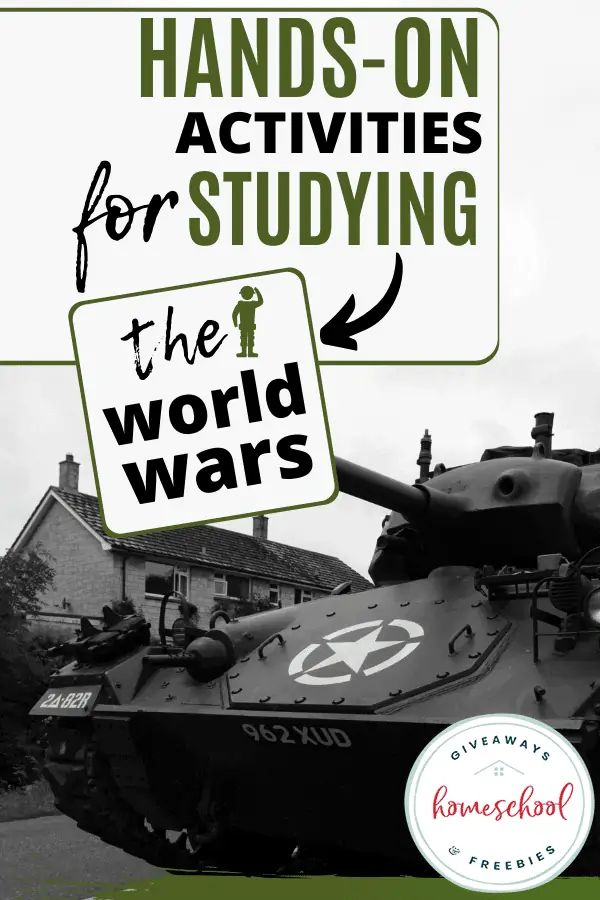
Hands-On Activities for Studying the World Wars
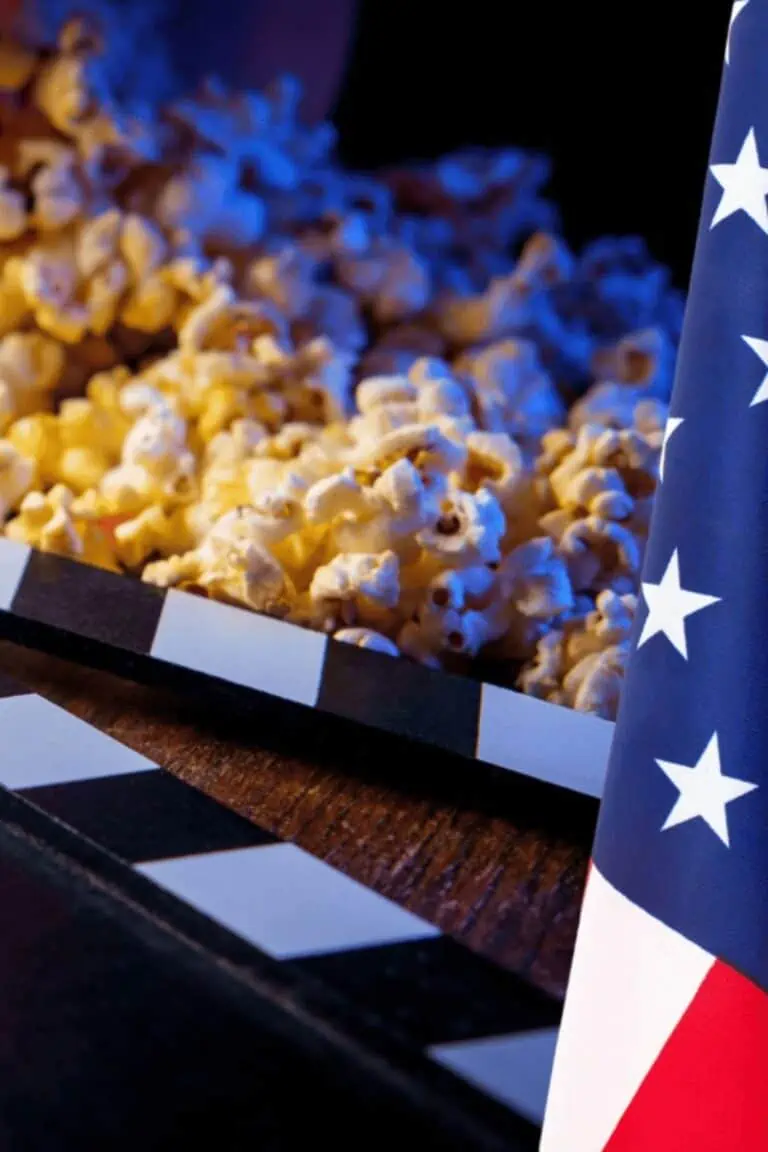
40 Top Films on our Presidential Movies List to Watch
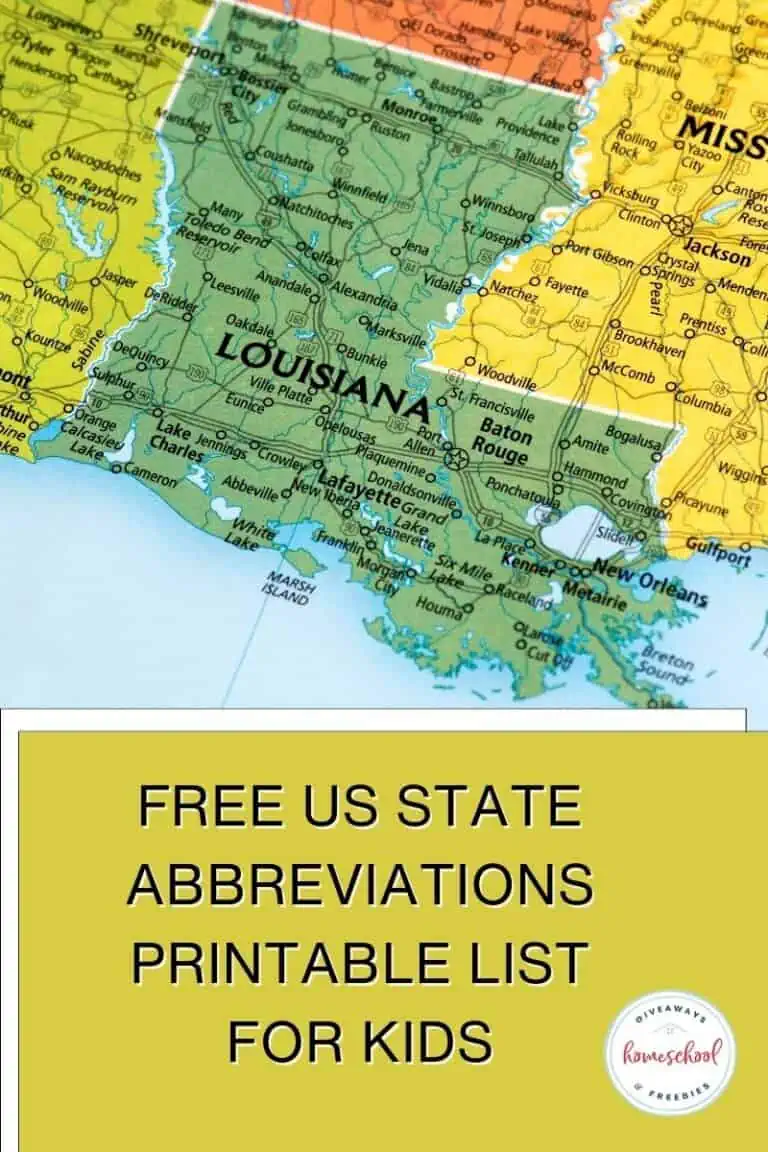
All 50 US State Abbreviations Printable List for Kids

7 Great National Parks in Missouri to Visit with Kids

| | | | | l | | | | | | | | |
is the new website for Woodlands Junior homework resources. Hundreds of pages of easy to read information and facts on many homework topics including , , , and . and also contain Woodlands Resources. |
| I have added a so you can locate the resources you need quickly. |
| | | | | | | |
Teachers may use the images below on their school website, only if the images link back to the relevant page on this site.
|
Visitor comments "My son found your site very helpful with his homework on the romans...and it speaks , child speak so they understand it and take it in properly...thank you " Zoe "I am just about to start teaching WW2 to my class and again my starting point is always your amazing website. It has so much great information, is user friendly and the children always love it. Thank you for an amazing teaching resource. " Kendal "Your religious festivals item is wonderful!! I used it last year as back up for my childminding work and have just printed it off again for this year. Thank you SO much!" Helen "I love the Romans and was excited to see your fantastic Roman soldier pages to help me with my Roman Homework. The photographs of Roman soldiers are brilliant. I have also used you other topic pages to help me wit my homework. Oh by the way I am not at primary school, I am at secondary school but still find your homewok resources brilliant." Amy
|
| - please read All the materials on these pages are free for homework and classroom use only. You may not redistribute, sell or place the content of this page on or without written permission from the author Mandy Barrow. |
©Copyright Mandy Barrow 2013 primaryhomeworkhelp.com
Follow me on Twitter @mbarrow
I teach computers at The Granville School and St. John's Primary School in Sevenoaks Kent.
Woodlands Junior School, Hunt RoadTonbridge

IMAGES
VIDEO
COMMENTS
From around 750 BC to 12 BC, the Celts were the most powerful people in central and northern Europe. There were many groups (tribes) of Celts, speaking a vaguely common language. The word Celt comes from the Greek word, Keltoi, which means barbarians and is properly pronounced as "Kelt". Interesting fact.
Primary Homework Help. The Celts. by Mandy Barrow : Celts. Romans. Saxons. Vikings. Normans. Tudors. Victorians. WW ll. 500 BC . AD 43. 450. 793. 1066. 1485. 1837. 1939 ... Most Celts lived in scattered farming communities surrounded by a bank with wooden fencing and a ditch to keep out intruders and wild animals.
The Celts living in Britain today stem from the two main types of Celt who invaded Britain: the Goidelic Celts (Gaels or Gaelic ) - Scotland, Isle of Man and Ireland. the Brythonic celts (Britons or British) - roughly Wales and Cornwall. The Goidelic Celts were first to invade Britain. They were later pushed into Ireland by their cousins the ...
Celtic Activities. 2 min. Updated: 29th November 2023. Find out more fun facts about the Celts and consolidate your learning at home with Twinkl's range of PowerPoints, worksheets and activities…. Facts about The Celts: KS2 PowerPoint: Facts about The Celts PowerPoint. Roman Empire Celts and Romans Map: Roman Empire Celts and Romans Map ...
The Celts were highly superstitious and were particularly worried when the strength of the Sun began to weaken at the end of the summer months. They would light fires in the belief that this would help the Sun's journey through the underworld during the winter months. The Celts celebrated Samhain on what is now known as Halloween. They ...
6 min. Updated: 15th November 2023. The Celts were a group of people that lived in Britain and other parts of Europe during the Iron Age from 750 BC to the time of the Roman invasion in 43 AD. There were many different groups or tribes of Iron Age Celts. Let's learn more about the Celts.
8. One of our favourite facts about the Celts: They lived in round houses instead of square ones. 9. Celtic people were skilled at boat-building. They would travel along rivers and across lakes on their crafts to trade. 10. Women during the Iron Age could gain power, land and status.
The main centre of the druids in Britain was Anglesey, in Wales. Gods and Goddesses. The Celts believed in many gods and goddesses: over 400 in fact. Among them were: Sucellos, the sky god, with a hammer that caused lightning, Nodens, who made clouds and rain. Many gods had no names, but lived in springs, woods and other places.
The Celts KS2 for kids learning at Primary School. Homework help on the history of Celts, the Iron Age facts, Celtic life and Boudicca. Time: 800BC - 50AD. Who were the Celts? The Celts were made up of many different tribes, but their way of life was very similar. Living through the Iron Age period, they grew from mid-Europe and slowly spread ...
The Celts famously had round houses, with the roof being made of straw in the shape of a cone. The walls of the houses were usually made of mud. A traditional Celtic roundhouse | Some Interesting Facts. As you can see in the house above, there is a hole at the top of the roof. This is because Celtic houses usually had a fire going in the middle ...
Among the ancient European peoples were the warlike Celts—tall, fair-skinned wanderers who spoke an Indo-European language. Their ancestors probably came from the distant steppes near the Caspian Sea. By 500 bc they were living in northeastern France, southwestern Germany, and Bohemia. The Celts, who were also called Gauls, continued to ...
Celtic Activities. 2 min. Updated: 29th November 2023. Find out more fun facts about the Celts and consolidate your learning at home with Twinkl's range of PowerPoints, worksheets and activities…. Facts about The Celts: KS2 PowerPoint: Facts about The Celts PowerPoint. Roman Empire Celts and Romans Map: Roman Empire Celts and Romans Map ...
This helpful homework guide for children is full of interesting facts about the Celts, the people who lived in Britain during the Iron Age. Welcome to our Homework Help guide all about the Celts. Click through the chapters on the left-hand side to learn more about this famous period of time! As well as help with your homework, these guides ...
Top 10 facts. The Celts lived during the Iron Age, from about 600 BC to 43 AD.This is the time when iron was discovered and used. The Iron Age ended when the Romans invaded Britain and set up their own civilisation and government.; The people who lived in Britain during the Iron Age weren't called 'Celts' until the 1700s.
The Celts loved bright dazzling colours. They dyed their woollen trousers and tops bright colours. Clothes were made from wool and dyed with natural vegetable dyes (plants and berries) and woven by hand on a vertical loom (pictured below). The wool cloth material made on the loom would then have been sewn together using a bone or metal needle ...
There were fields and pastures nearby for farming and raising cattle. The Celts were skilled in working with metals. They were one of the first peoples in Europe to work with iron. They made swords, shields, helmets, and gold and silver jewelry. The Celts practiced a religion called Druidism. Their priests were called Druids.
This fantastic pack contains a selection of our Celtic themed resources and a topic web - perfect for your lessons on this area of history. Along with this resource pack, this Facts about the Celts PowerPoint should help you when teaching children about Celtic history. The concluding part of our topic on Stone age to Iron Age. Great resource ...
Brief Celtic history and facts. The Celts were an advanced society that lived during the Iron Age around 600 B.C. to A.D. 43. Celts moved away from Europe and toward the islands that make up the United Kingdom today like Scotland, Ireland, Wales, and England. On these islands, the Celts settled on small kingdoms called tuaths where the kings ...
There were no supermarkets or shops to buy food so the celts ate what food they could grow or hunt. Vegetables e.g. leeks, onions, turnips, parsnips and carrots. Wild nuts e.g. hazelnuts and walnuts. Berries e.g. gooseberries, blackberries and blueberries. Wild animals e.g. deer, wild boar, fox, beaver, and bear.
Primaryhomeworkhelp is the new website for Woodlands Junior homework resources. Hundreds of pages of easy to read information and facts on many homework topics including tudors, victorians, romans, rivers and mountains. Projectbritain.com and London Topic also contain Woodlands Resources. I have added a search page so you can locate the ...